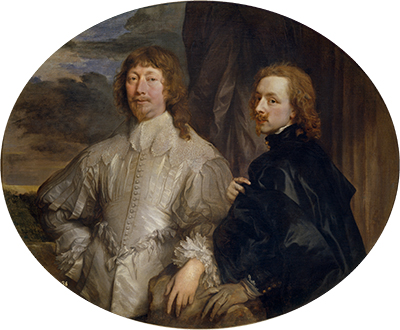This portrait features artist Anthony van Dyck alongside one of his major donors, namely Sir Endymion Porter
The original artwork can now be found at the world famous Museo del Prado in the Spanish capital, Madrid. That highly prestigious art institution holds one of the finest collections of European art in the world.
There are contrasting opinions on just precisely when this painting was completed, but the general consensus places it between the years of 1633 and 1635. At this point artist Van Dyck has reached his peak as an artist, making this a highly significant piece.
Sir Endymion Porter was an established art dealer who served the passionate whims of King Charles I who reigned over the kingdoms of England, Scotland and Ireland. Porter played a major role in their capture of the entire collection of the Duke of Mantua, a purchase that lifted the monarch’s growing collection to a whole new level.
One interesting aspect from this scene is that although Van Dyck produced a large number of self portraits across his career, this particular painting remains the only one in which he is joined by another individual. If nothing else, this must surely underline the importance of the art dealer in Van Dyck’s life.
To complete the connection, the dealer was also well acquainted with Van Dyck’s tutor, Peter Paul Rubens. The budding painter had spent several years under the tutor-ledge of the great master.
Well worth a visit, the extraordinary Museo del Prado also features original paintings by the likes of Fra Angelico, Albrecht Durer, Hieronymus Bosch, Raphael and El Greco. The venue hosts a fine collection of work by notable Spanish artists, as you would expect, but there is also great coverage of the Italian Renaissance plus Flemish and German members of the Northern Renaissance. The most famous painting in the entire complex would have to be Las Meninas by Diego Velazquez.




